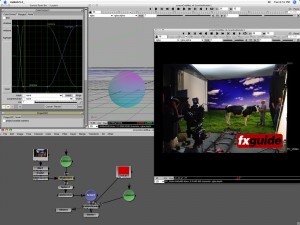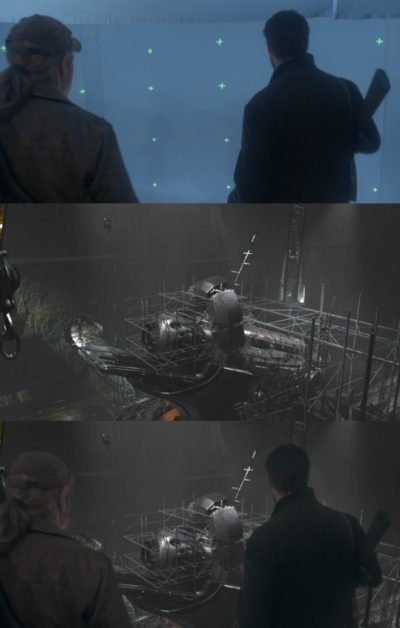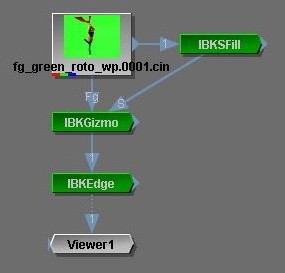In an interesting move, NUKE is released on Mac OS X.
The new 4.5 version of NUKE also includes impressive new tools such as a new Image Based Keyer, a more flexible 3D tool set and an improved workflow.

NUKE is now available on OS X for $4,995, plus $999 annual maintenance. NUKE 4.5 now runs on Windows, LINUX, IRIX and Mac OS X. NUKE, already one of the most flexible and powerful 3D compositing environments has expanded its 3D workspace and 3D camera projection tools with additional 3D flexibilty, plus a new UI mode, and most interesting a new Keyer the “image based keyer” or IBK.
D2 Software is now shipping v4.5 of Nuke for all platforms.
Fxguide has an exclusive podcast next Monday covering Nuke 4.5 and Aeon Flux. We also expect to be working closely with D2 to test drive the new version for a later review.
Keying
Nuke artists will find a brand new image-based keyer (IBK) in v4.5, which provides a unique and flexible method for pulling high-quality keys. In traditional keyers, algorithms are based on the weighted relationship between the color channels involved in creating a key, locking them together so that as artists adjust one color channel, another color channel is proportionally adjusted. By contrast, the IBK’s algorithm enables artists to work on each color channel individually, for greater creative flexibility. It also includes specialized tools to deal with matte edges and the halo effect (or ‘fringes’) common in blue and green screen footage. The IBK, uniquely available in Nuke, delivers substantial time savings when producing high quality composites, and is especially good at keying uneven blue/greenscreens.
Users who have been using the product in beta claim dramatic speed improvements due to the new keyer and improved workflow.
Nuke’s new image-based keyer lets artists isolate and control each color channel separately, for greater flexibility. In this sequence,the artist creates a new image to be keyed.
and uses the IBKSFill node to generate the new image – with complete flexibility to manipulate that image with a color correction, grade or other color tools.
The artist then applies the IBKGizmo which takes the two images and performs the actual key, and IBKedge to remove any halo effect. The entire process is shown in the node diagram.
3D
Now, 3D objects are more like 2D elements in that they are no longer unchangeable objects — users can apply multiple independent transforms and can have shaders and materials applied directly within Nuke’s 3D environment.
D2 indicated that this would lead to accelerated development and deployment of new features in the future.
UI
The newest Nuke release is based on a core UI update. V4.5 adds the ability to save UI layouts. Updated default settings and a new control panel bin enable new users to manage windows and property dialog boxes using conventions familiar to desktop software users, while long-time Nuke users can opt to work in the ‘traditional’ Nuke mode, to suit a variety of compositing styles. Also, as a result of the core UI update, users can now take any parameter, including range curve displays and dropdown menus, from a ‘group’ of nodes, and include them in a Nuke Gizmo, or custom effect.
In addition Nuke is now providing full support for the OpenFX plug-in architecture, enabling artists to use the full range of effects plug-ins from The Foundry, Primatte, and other providers.
D2 Software product manager, Dominick Spina, said, “As more users join the Nuke community we’re working closely with them to incorporate their feedback. V4.5 takes all the great things about Nuke – the complex 3D setups, TCL scripting across 64 channels, and its superior film production workflow – and makes them more accessible to new users, through UI updates that let them work the way they’re used to. We also put new pricing in place to better reflect the needs of the desktop compositing market and to offer significant volume discounts to the large, multi-seat customers that Nuke was built for.â€


